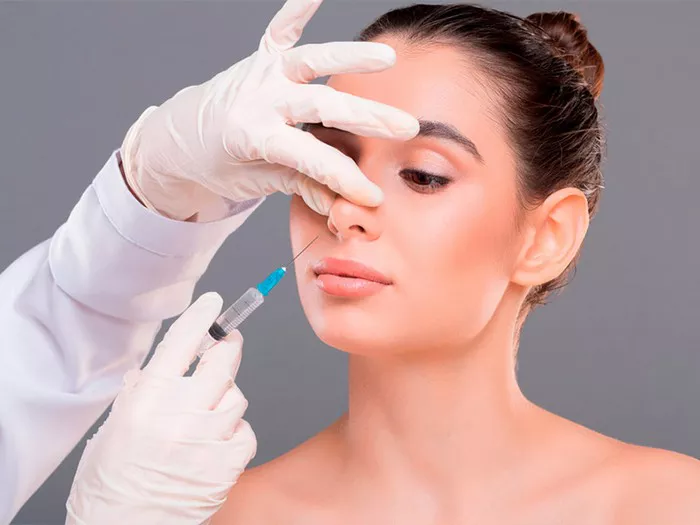Rhinoplasty, commonly known as a nose job, is a surgical procedure performed to reshape and enhance the appearance of the nose. While rhinoplasty can yield transformative results, it is important to understand the recovery process and what to expect post-surgery. One common concern for patients undergoing rhinoplasty is bruising. In this article, we will explore the timeline of rhinoplasty bruising and provide helpful tips for a smoother recovery.
Understanding Rhinoplasty Bruising
Bruising is a natural response of the body to injury or trauma. During rhinoplasty, the nasal tissues undergo manipulation and reshaping, leading to potential blood vessel disruption and subsequent bruising. The severity and duration of bruising can vary depending on several factors, including individual healing ability, surgical technique, and the extent of the procedure.
The Immediate Post-Surgery Period
After rhinoplasty, it is common to experience bruising and swelling around the nose, eyes, and upper cheeks. The bruising usually develops within the first few days following surgery and can be more pronounced during the initial 24 to 48 hours. It is important to note that the appearance and extent of bruising can vary among individuals.
First Week of Recovery
During the first week of recovery, the bruising gradually becomes more visible and reaches its peak intensity. The bruised areas may appear dark purple, blue, or yellowish. Swelling may also be at its highest during this time. It is important to follow the post-operative care instructions provided by your surgeon, which may include measures to reduce swelling and bruising, such as applying cold compresses or taking prescribed medications.
Second Week of Recovery
As the second week of recovery progresses, the bruising typically begins to fade. The dark hues transform into lighter shades of yellow or green. Swelling also starts to subside, although some residual swelling may persist. Your surgeon may recommend gentle massage techniques or the use of topical treatments to aid in reducing bruising and swelling during this stage.
Third and Fourth Weeks of Recovery
By the third and fourth weeks of recovery, the majority of visible bruising should have resolved. Any remaining discoloration may appear faint and can be easily camouflaged with makeup. Swelling will continue to diminish, and the shape of the nose becomes more apparent. However, it is important to note that each individual’s healing process is unique, and some patients may experience lingering bruising and swelling for a longer period.
Tips for Minimizing Rhinoplasty Bruising
While bruising is a natural part of the rhinoplasty recovery process, there are steps you can take to help minimize its duration and intensity:
Follow Post-Operative Instructions: It is crucial to adhere to your surgeon’s post-operative guidelines. These may include avoiding strenuous activities, keeping your head elevated while resting, and taking prescribed medications as directed.
Apply Cold Compresses: Cold compresses can help reduce swelling and bruising. Use ice packs or chilled compresses wrapped in a thin cloth and apply them gently to the bruised areas for short periods, as recommended by your surgeon.
Avoid Blood Thinners: Certain medications and supplements, such as aspirin, nonsteroidal anti-inflammatory drugs (NSAIDs), and herbal supplements, can increase the risk of bleeding and bruising. It is important to consult with your surgeon about any medications or supplements you are taking and follow their recommendations.
Eat a Nutrient-Rich Diet: Consuming a healthy diet rich in vitamins and minerals can support your body’s healing process. Include foods that are high in antioxidants, such as fruits and vegetables, to promote faster recovery.
Stay Hydrated: Drinking an adequate amount of water helps keep your body hydrated and aids in the healing process. Proper hydration can also help flush out toxins and reduce swelling.
Avoid Smoking and Alcohol: Smoking and alcohol consumption can hinder the healing process and increase the risk of complications. It is essential to refrain from smoking and limit alcohol intake during your recovery period.
Protect Your Nose: Be cautious and avoid accidental bumps or pressure on the nose during the healing process. Your surgeon may provide specific instructions on protecting your nose, such as wearing protective splints or avoiding activities that could potentially cause trauma to the area.
Be Patient: Remember that every individual heals at their own pace. While it can be challenging to be patient during the recovery process, it is important to allow your body sufficient time to heal fully.
Consulting Your Surgeon
If you have concerns about the duration or severity of bruising during your rhinoplasty recovery, it is crucial to consult with your surgeon. They can evaluate your specific situation, provide appropriate guidance, and address any questions or concerns you may have.
Conclusion
Rhinoplasty bruising is a common occurrence following the surgery, but it gradually resolves over time. The intensity and duration of bruising can vary among individuals. By following post-operative care instructions, applying cold compresses, eating a nutritious diet, staying hydrated, and avoiding smoking and alcohol, you can help minimize bruising and promote a smoother recovery. Remember to consult your surgeon if you have any concerns or questions throughout the healing process. With patience and proper care, you will be on your way to enjoying the transformative results of your rhinoplasty.


